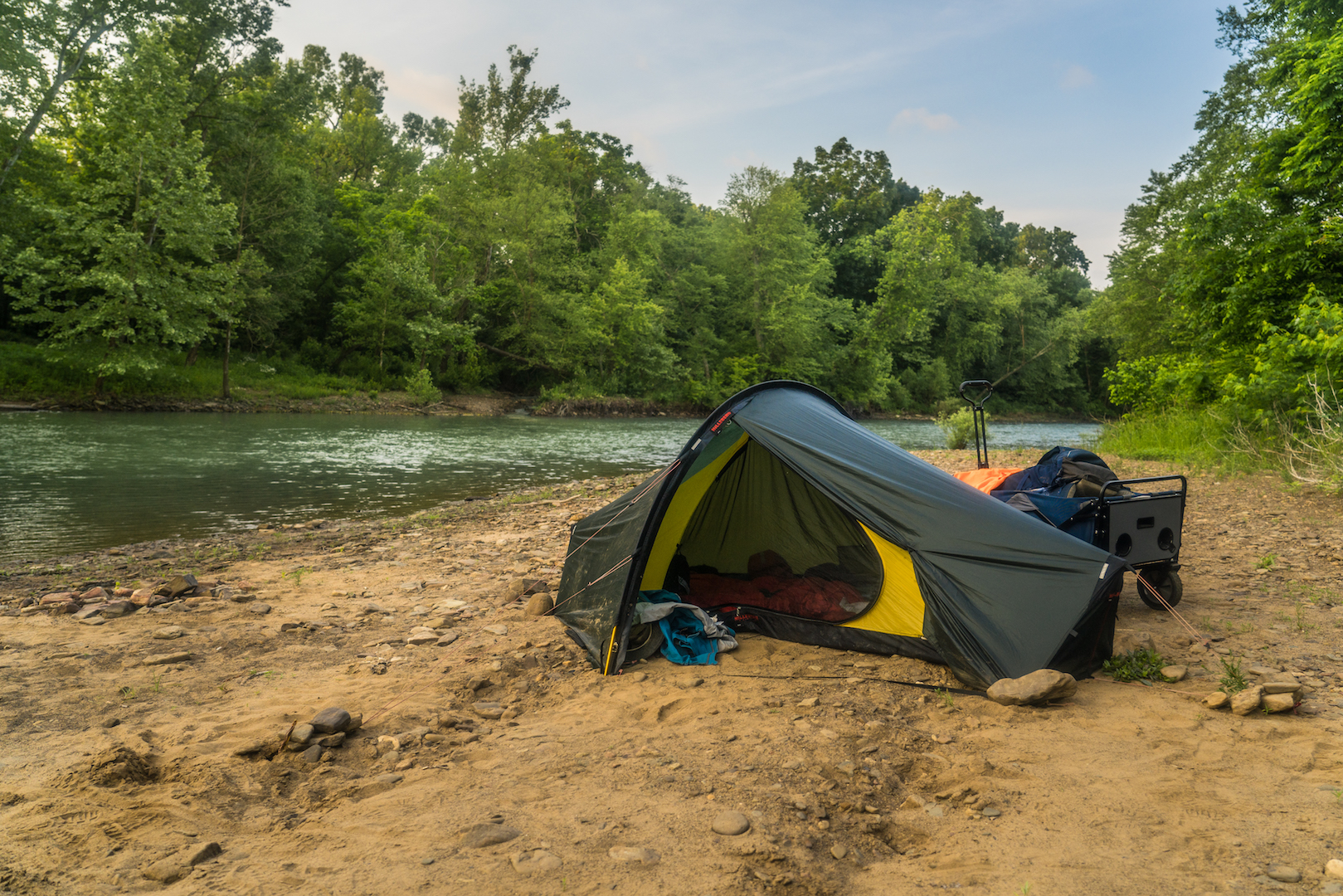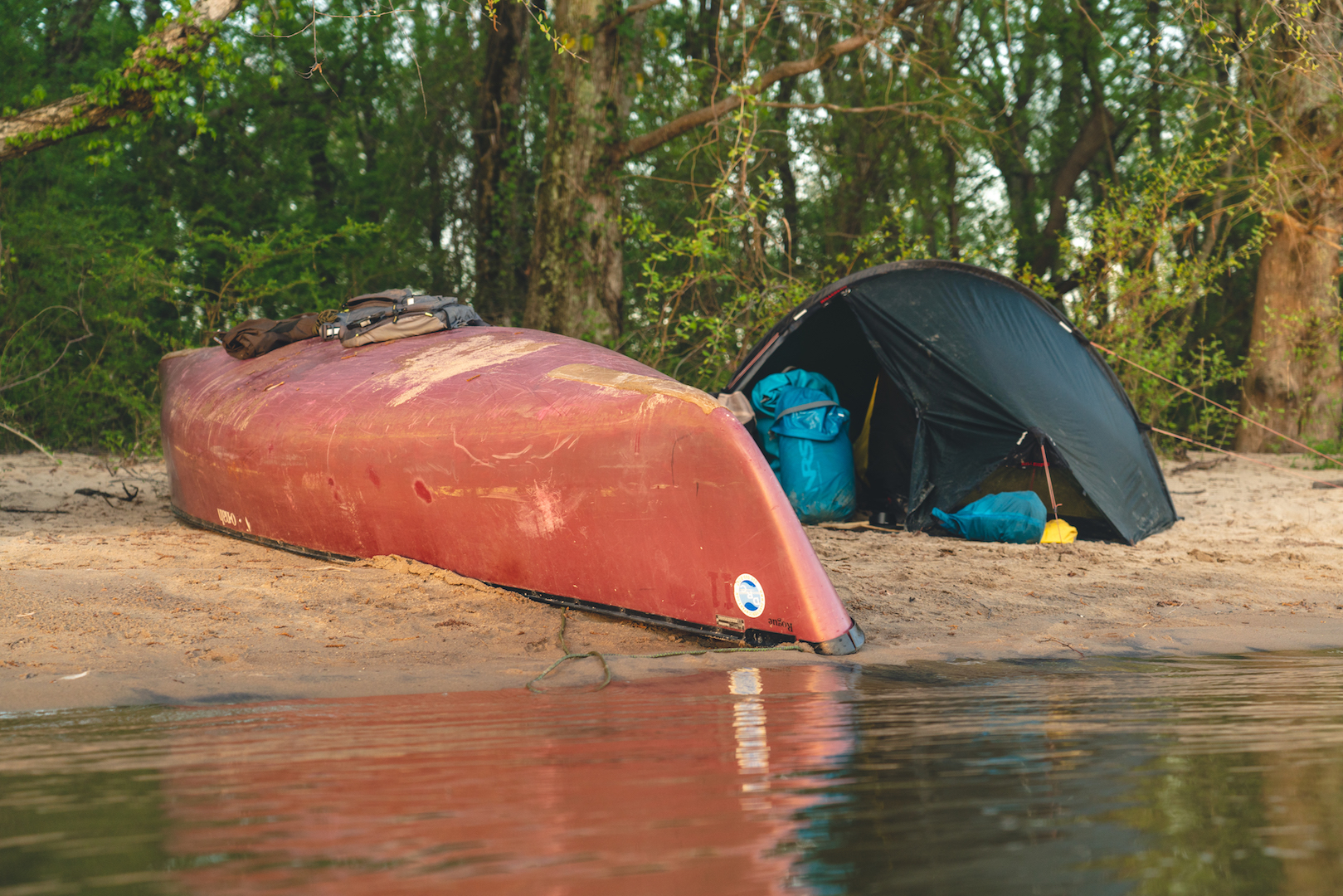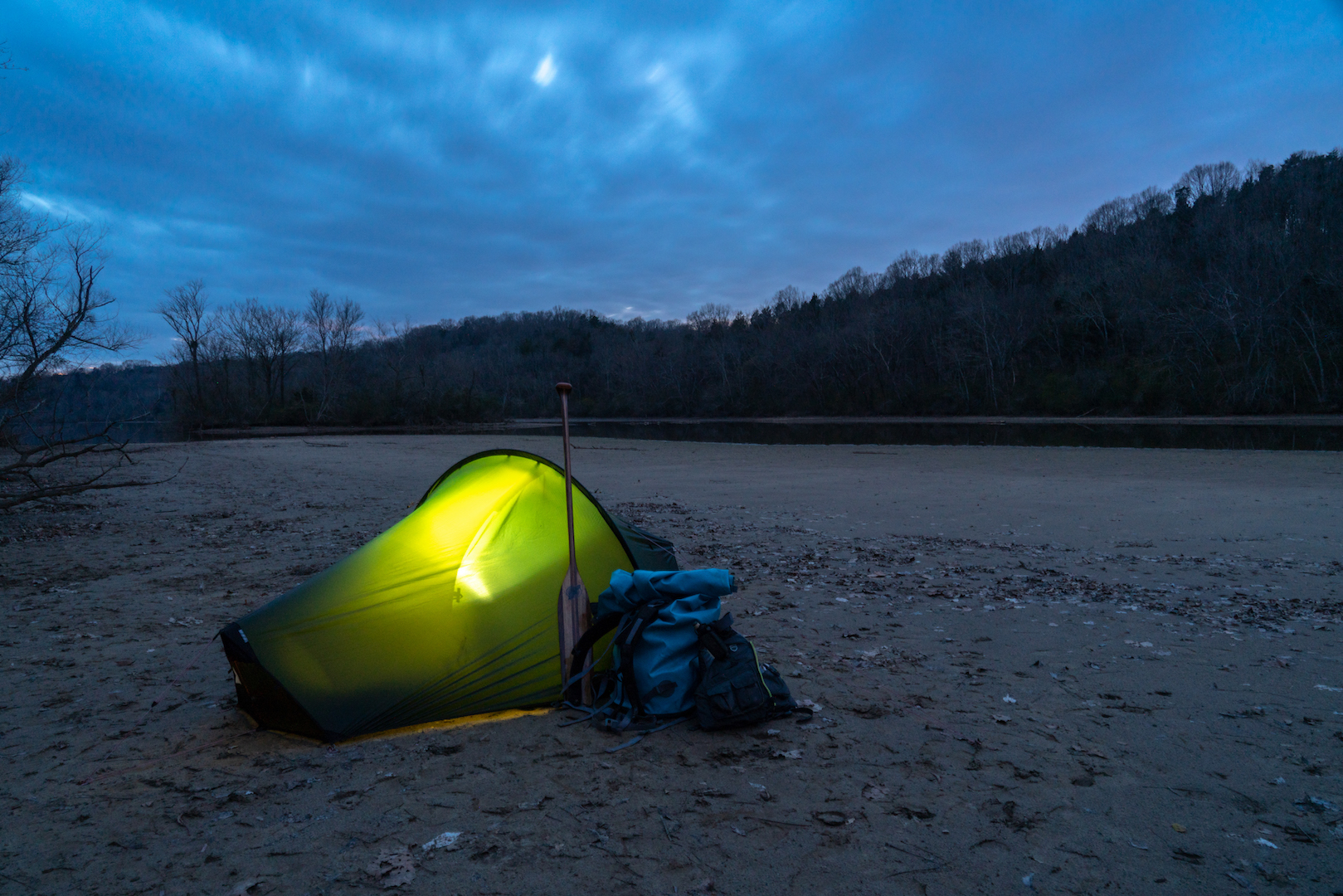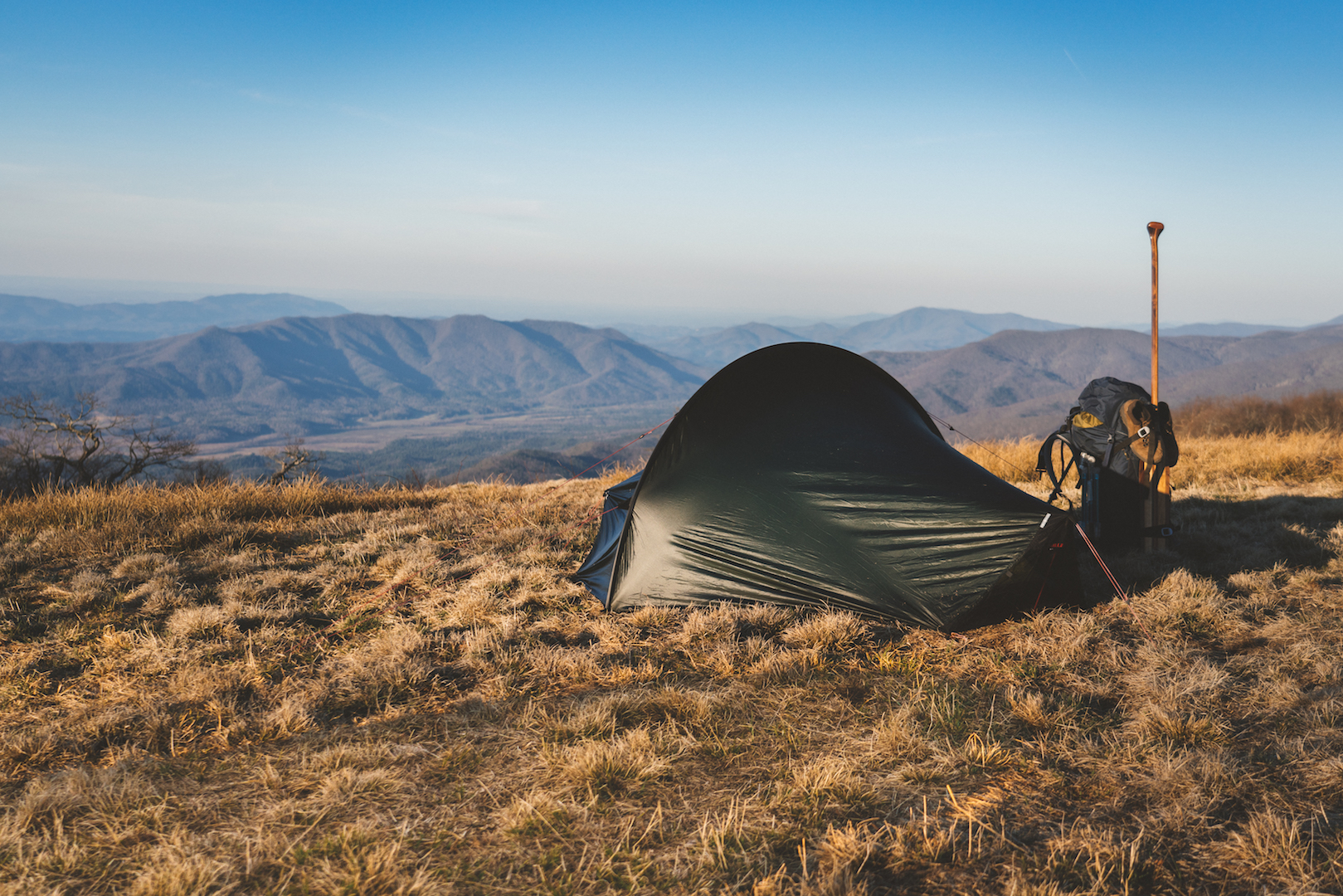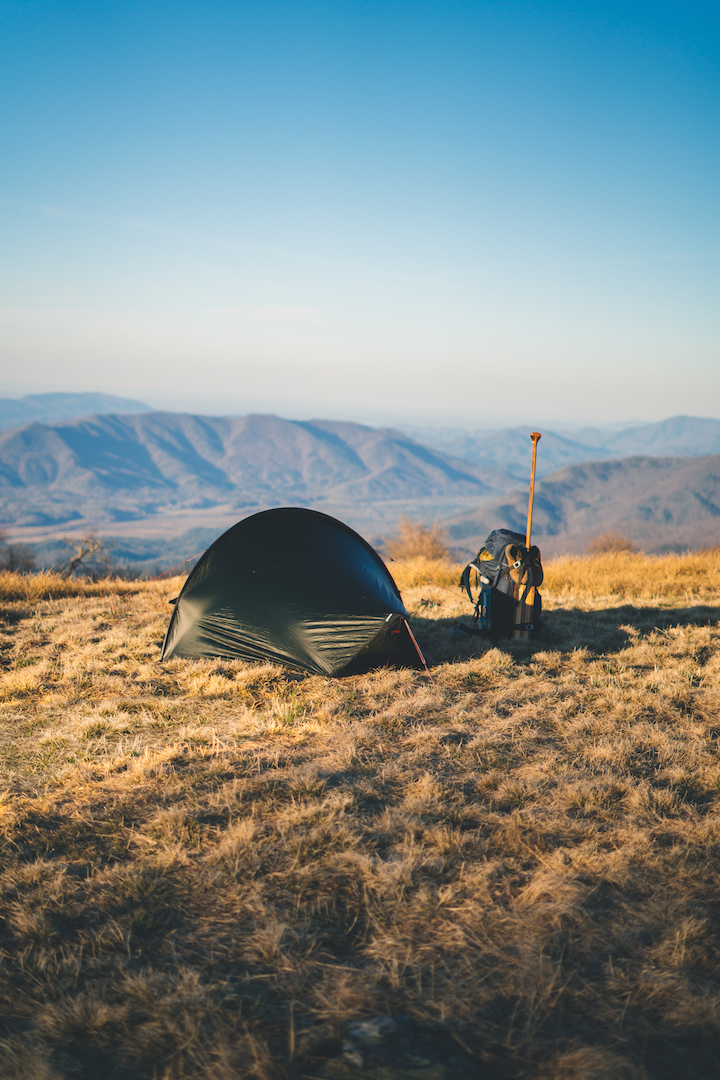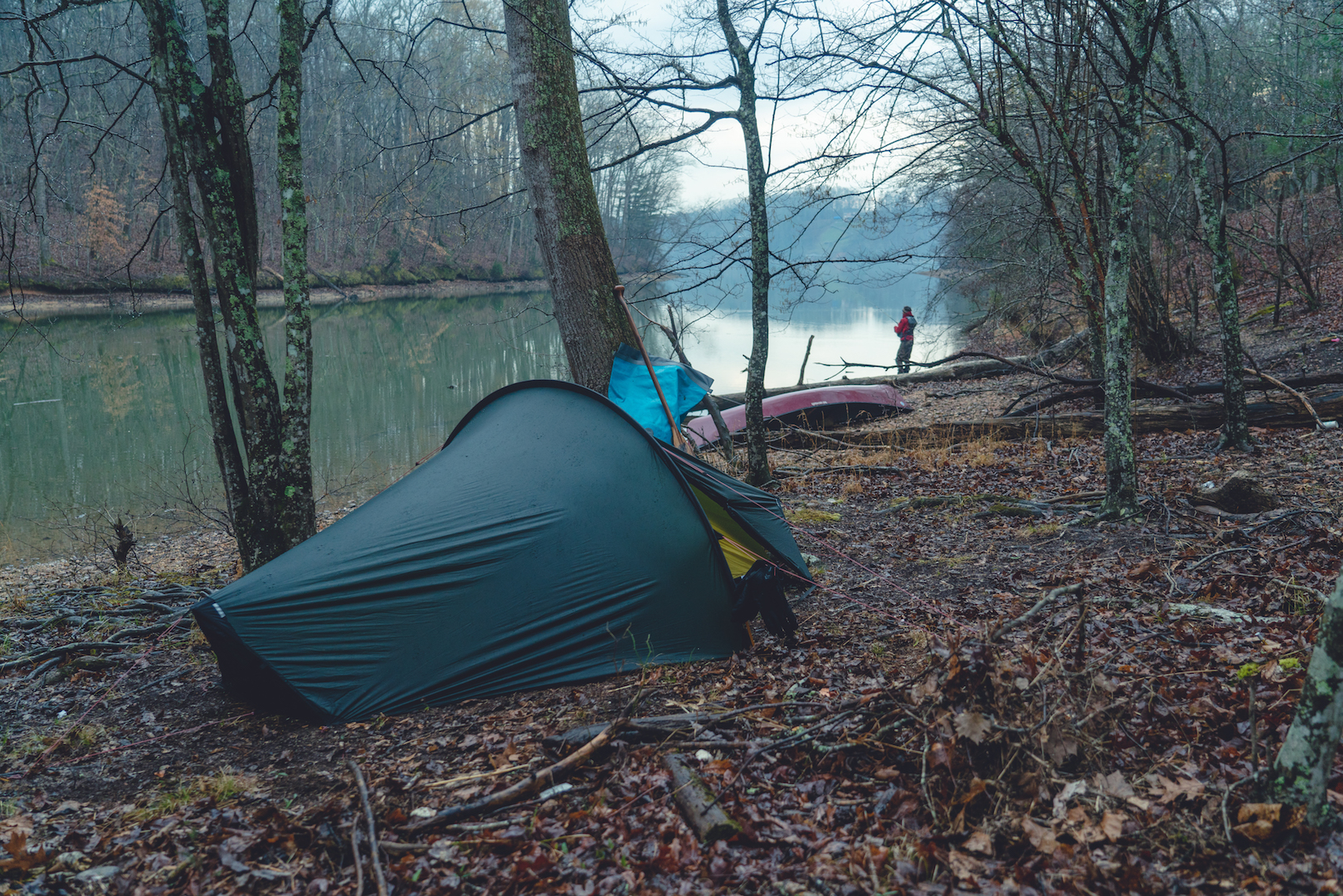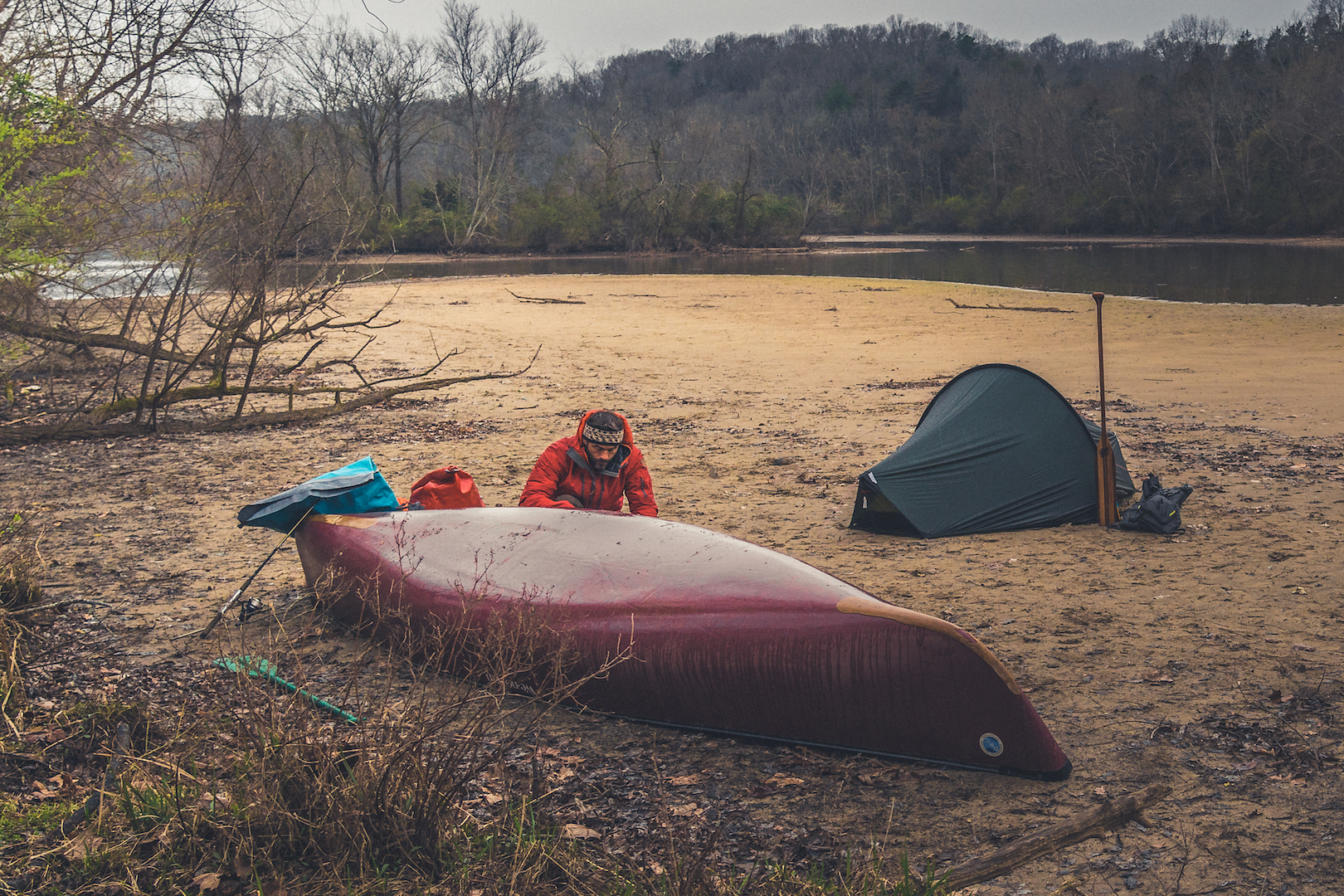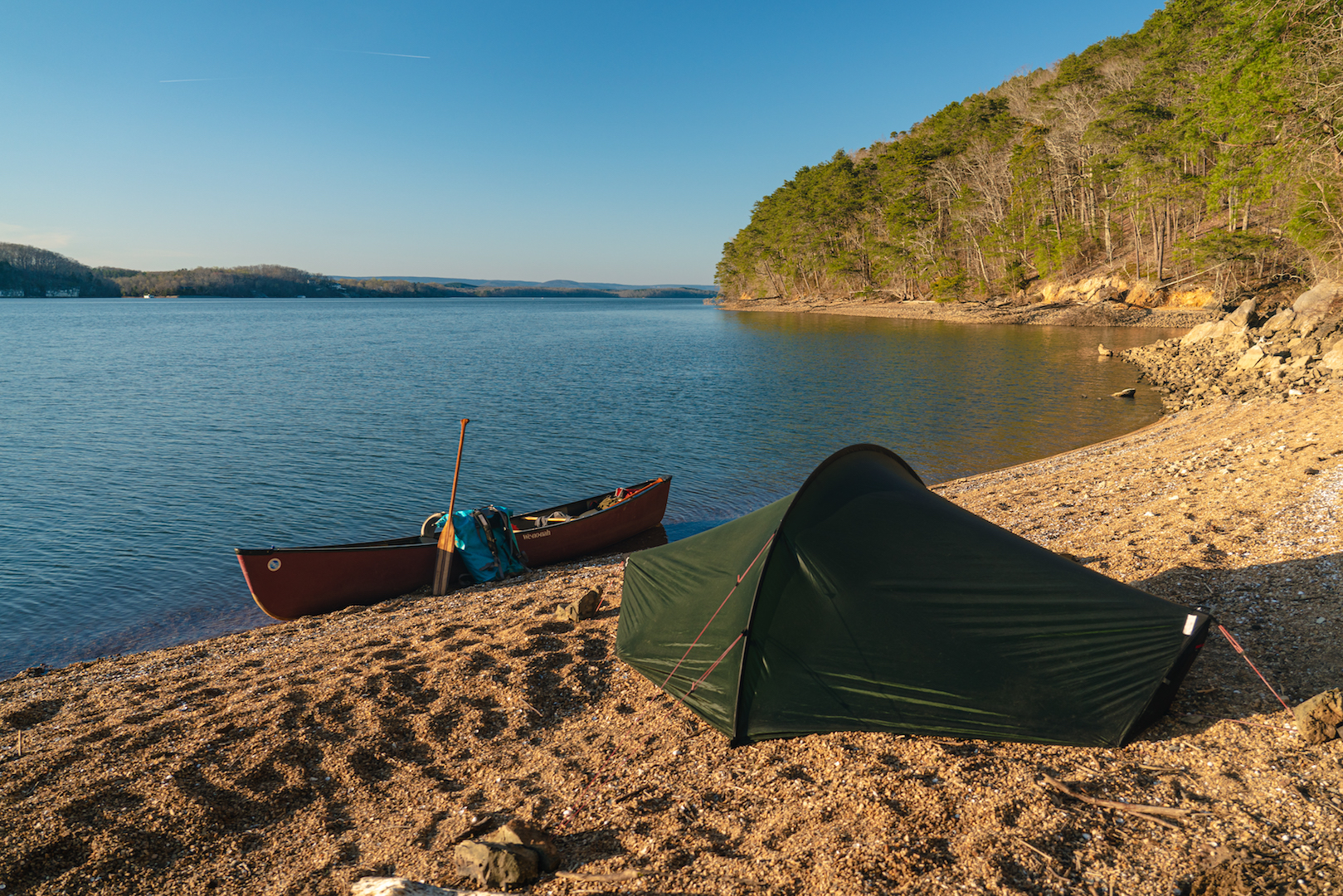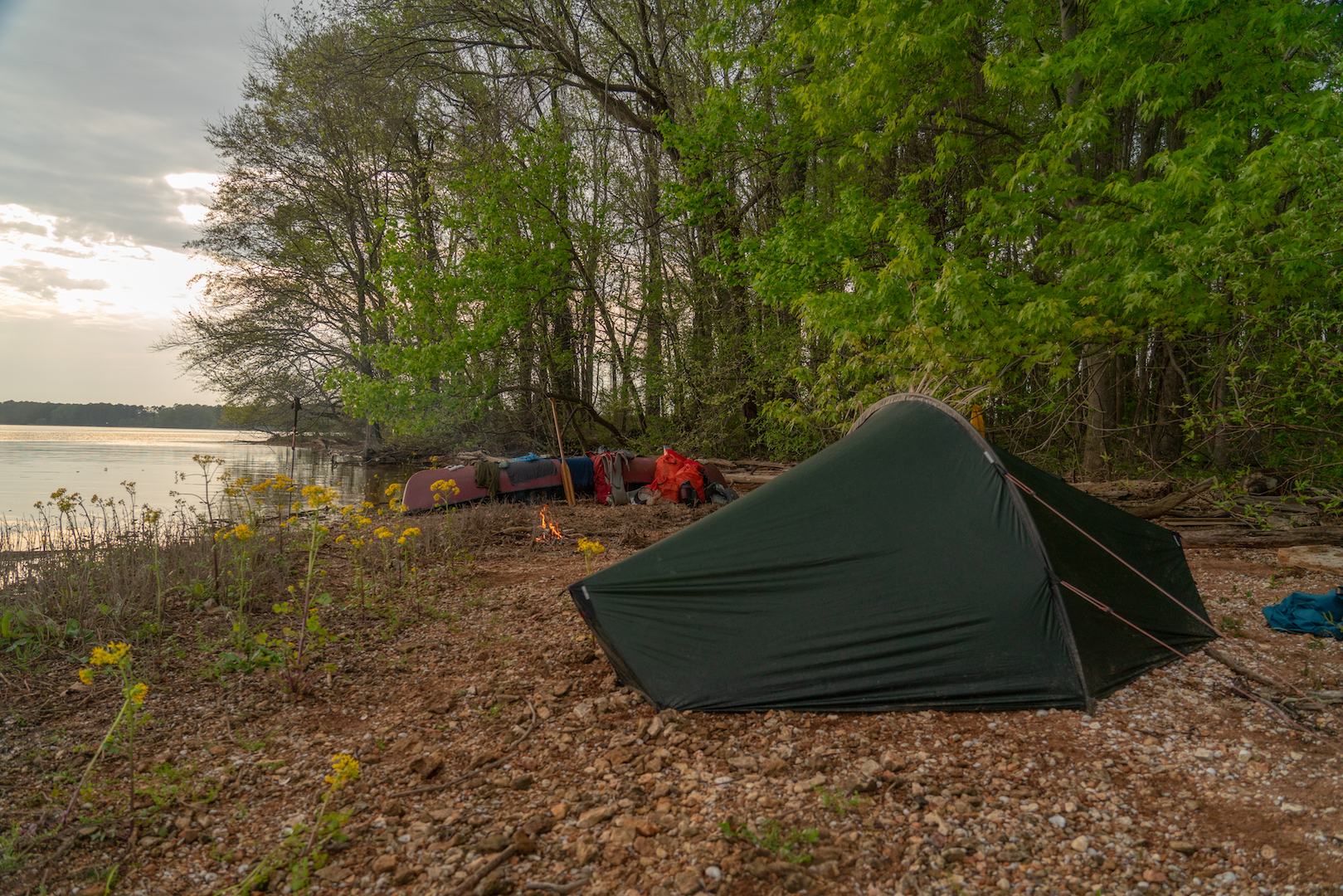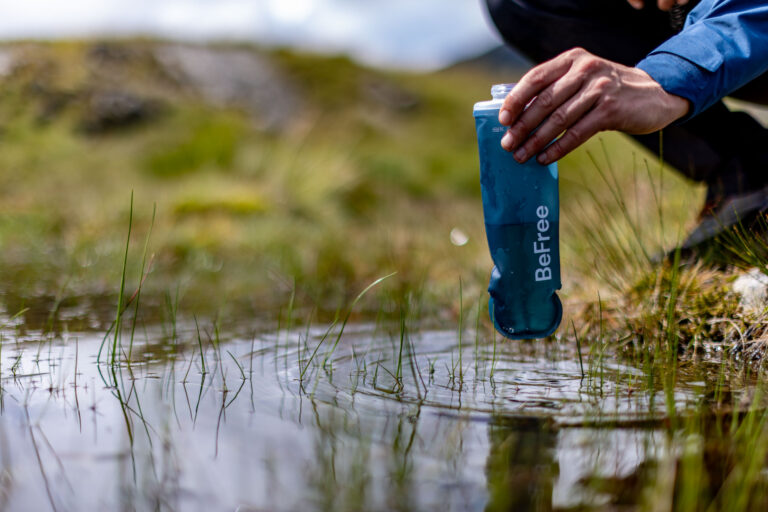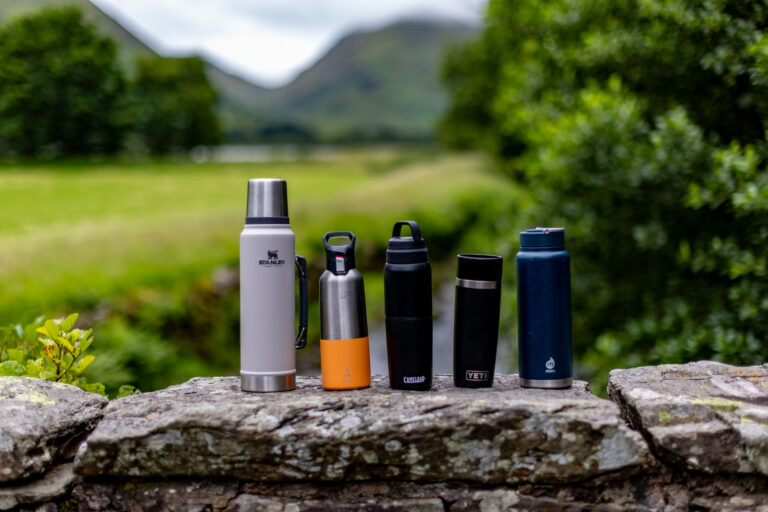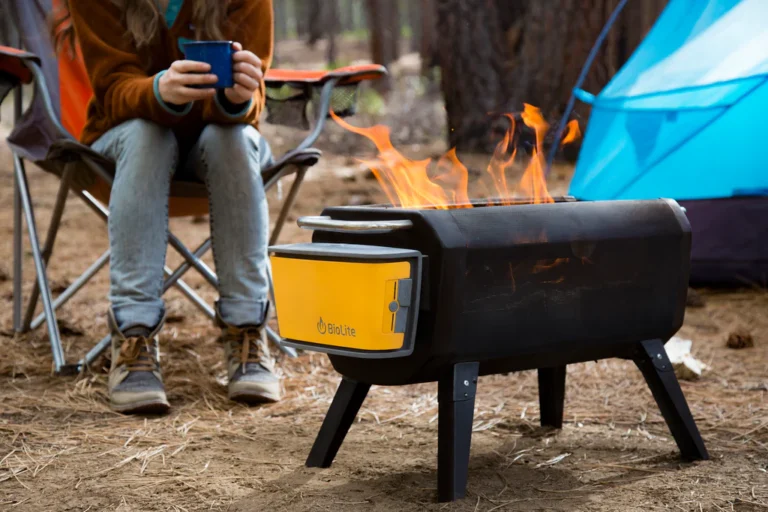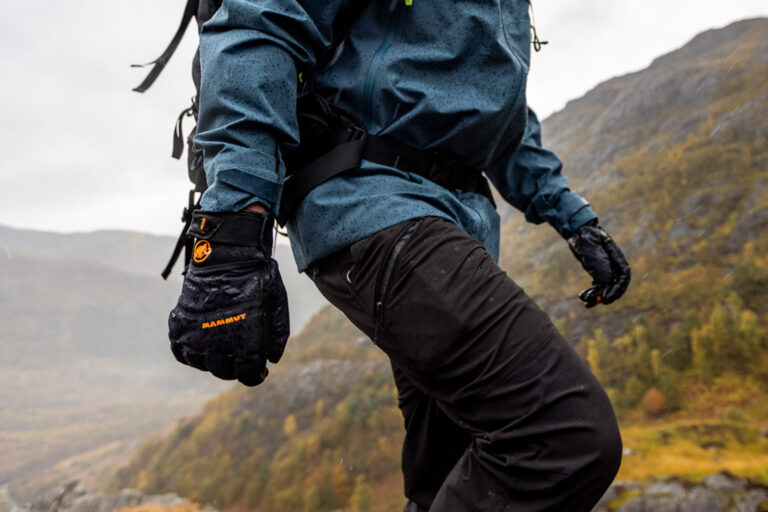It’s a difficult challenge for brands to try to make a tent that’s as lightweight as physically possible yet also strong enough to withstand a battering from the elements. So all credit to Hilleberg as they seem to have got things spot on here with the Enan.
The Enan tent takes a lot of its key design specifications from Hilleberg’s award-winning all-season Akto, being a lighter three-season alternative whilst still maintaining an incredible degree of function and build quality.
Related: Best Solo Tents For Backpacking
With it’s single pole design, only eight pegs being required and the ability to pitch with the inner and flysheet combined, the Hilleberg Enan is a quick and super easy tent to erect.
Using a lighter yet still durable version of Hilleberg’s signature ripstop Kerlon fabric, the flysheet feels strong and durable, and despite packing small and weighing in at just 1.2kg altogether, the Enan offers a considerable amount of space within.
The inner tent gave me plenty of room to lay all of my kit next to me and the porch area was fine for a 55-litre backpack, hiking boots and a camping stove whilst also still providing enough room for me to get out without clambering over everything. I am 5’9” and there was a good amount of space at my head and feet when I was lying down inside. I reckon people under 6’3” wouldn’t have any issues with room when lying down either.
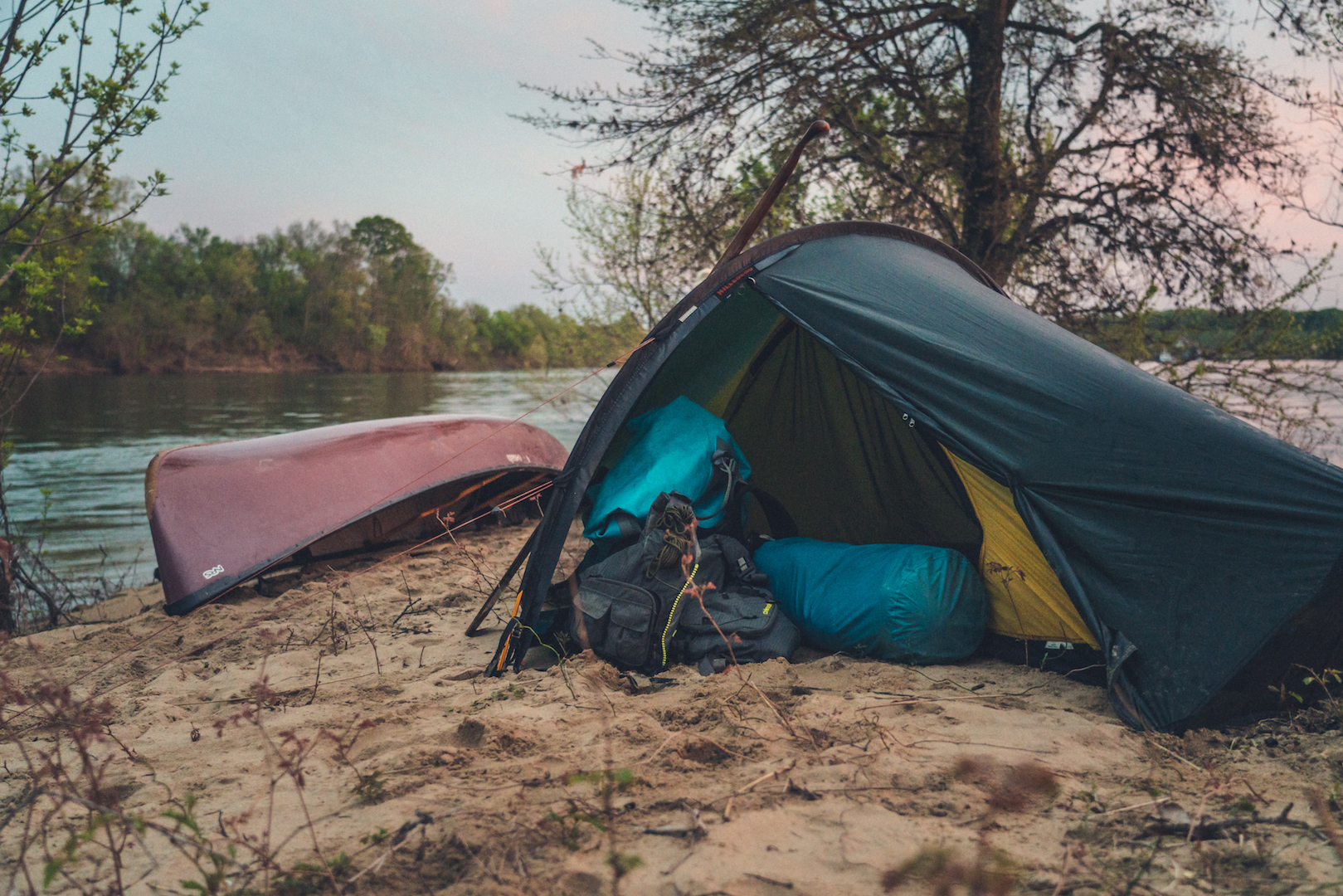
The height of the tent also provided comfortable space to be able to sit up inside, although people who are much taller may not have the luxurious room that I did. That room to sit up is certainly handy for when I wanted to pack my kit away without having to stand outside and do it in the rain.
Related: Best Two-Person Tents For Backpacking
If you are a frequent camper you will probably know that condensation can be a tricky battle when camping in humid environments, the Enan however has an upper hand. With the mesh vents on the front and back of the flysheet, air can flow freely through the tent drastically reducing the build up of condensation on the inside of the outer layer. Sections of fabric can be found tucked away in small pockets over the mesh vents that can be rolled down in strong winds and rain.


